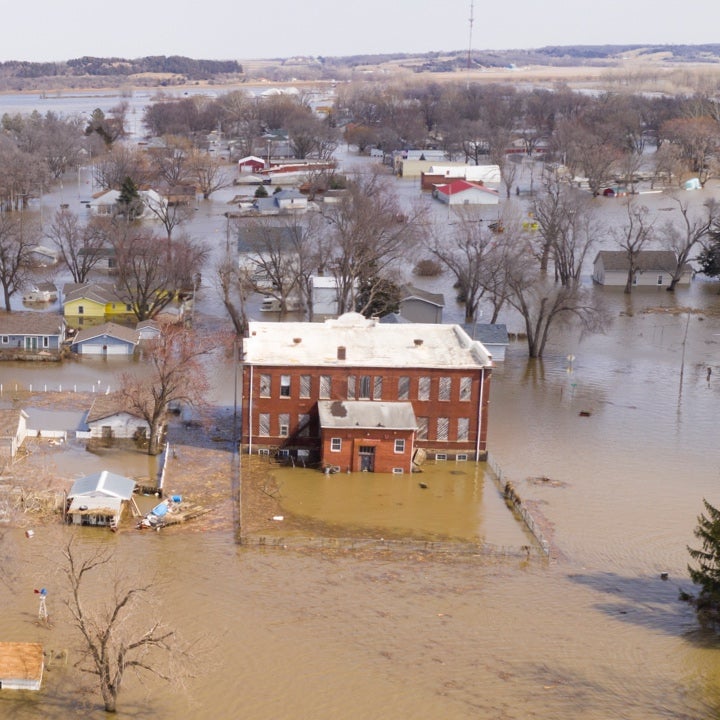The U.S. flood insurance market is experiencing a notable transformation, influenced by various factors, from the increasing occurrence of flood events to regulatory developments and advances in modeling, leveraging technological advances and computational power.
An example of these regular flood events highlighting the growing need for robust flood insurance cover has recently included flooding in South Florida in mid-June.
Between June 11-14, an elongated area of low pressure moved from the Gulf of Mexico over the Florida Peninsula producing torrential rainfall.
Over two feet of rainfall in less than 48 hours was observed in Big Cypress, Collier County, with up to 25.8 inches (655 millimeters).
This resulted in localized flash flooding in South Florida, with many flooded and closed roads and vehicle damage. A state of emergency was declared in Broward, Collier, Lee, Miami-Dade, and Sarasota Counties.
Thousands of flights were canceled or delayed at Miami International Airport and Fort Lauderdale-Hollywood International Airport. Residential neighborhoods in Broward and Miami-Dade experienced several inches of standing floodwater.
South Florida is just one example of a nation experiencing a heightened frequency and severity of flooding. 99 percent of U.S. counties have been affected by floods. Flood risk is an extensive and widespread problem, and a critical aspect of the market's evolution is the recognition of a nationwide risk.
Factors Driving Flood Insurance Market Evolution
The evolving flood risk landscape presents myriad challenges – and opportunities, for a wide range of stakeholders, including insurance, policymakers, and property owners, so what are the market dynamics and what do they offer as a glimpse into the potential future trajectory of flood insurance within the U.S?
First is the importance of the National Flood Insurance Program (NFIP), traditionally the primary source of flood insurance, with around 4.7 million policies in force.
However, the program has witnessed a decline in the number of policies, partly attributed to challenges related to affordability and the introduction of Risk Rating 2.0.
This new rating system aimed to price policies more accurately based on individual risk but also led to higher premiums for many policyholders.
Consequently, there has been a noticeable migration towards the private flood insurance sector, which experienced a significant increase, with direct written premiums surging by 43 percent in 2021.
Legislative changes have further supported this shift, notably the Federal Housing Administration's decision to allow its insured mortgage holders the option to select private flood insurance providers as of December 2022.
If we focus on Florida, a key player in the flood insurance market, recent events such as Hurricane Ian in 2022 have prompted legislative responses and adjustments in insurance requirements. The state has emphasized the importance of mandatory flood insurance notices.
Furthermore, Citizens Property Insurance Corporation, Florida’s state's insurer of last resort, has expanded its flood insurance requirement to include policyholders not located in flood zones.
This change encourages more property owners to purchase flood insurance, even if not in high-risk areas, recognizing that flooding can occur anywhere. This move is expected to drive up demand for flood insurance and increase the overall penetration of flood coverage in the state.
Rising risks and changing market conditions are prompting a reassessment of flood risk assessment, management, and insurance practices.
A shift towards more advanced modeling techniques, leveraging technological advances and computational power, does suggest a future in which flood coverage is more aligned with actual risk levels, is more accessible, and part of a comprehensive approach to managing flood risk.
This evolution not only promises to enhance financial resilience for property owners but also to stimulate innovation and investment in flood risk mitigation and adaptation measures
Flood Modeling Advances
In the context of the evolving U.S. flood insurance market and the critical need for accurate flood risk assessment, the development and application of sophisticated modeling tools have become indispensable.
A notable advancement is represented by Moody’s RMS U.S. Inland Flood HD Model, which exemplifies the forefront of flood risk modeling technology. This model covers the contiguous U.S. and simulates over one million flood events, encompassing all sources of flooding, including coastal, fluvial, and pluvial flooding with special accounting for urban flood processes.
It is designed to capture a wide array of conditions that affect flood risk, from antecedent soil moisture conditions to seasonal variations and event clustering, offering a comprehensive view of flood hazards across the U.S.
With more than 300 water-based damage curves and 11 secondary modifiers, the model provides an intricate understanding of how different types of buildings and structures are likely to be affected by flooding.
It incorporates explicit modeling of both tropical cyclone and non-tropical cyclone rainfall events, employing advanced hydrologic and hydraulic modeling techniques. This allows for a nuanced perspective on flood risk, including defended (areas protected by flood defenses) and undefended views, with customizable options to suit various needs and scenarios.
A unique aspect of the model is its explicit consideration of building characteristics, such as basements and first-floor height, which significantly influence flood vulnerability.
Correlated and consistent with Moody’s RMS North Atlantic Hurricane Models, the flood model provides a cohesive and comprehensive approach to modeling flood risk in the context of broader climate-related hazards.
Taking June 2024 as a typical example, in addition to flooding in South Florida, as the month closed between June 21-25 it was the turn of Iowa and South Dakota, landlocked U.S. states, to endure excessive rain, with initial damage assessments indicating that 1,900 houses in Iowa had been damaged or destroyed.
By harnessing technological advances and computational power, this model offers stakeholders in the flood insurance market a powerful tool for improving the accuracy of flood risk assessments, enhancing insurance underwriting practices, and ultimately contributing to the resilience of communities against flooding.
Find out more about Moody's RMS flood models here.








